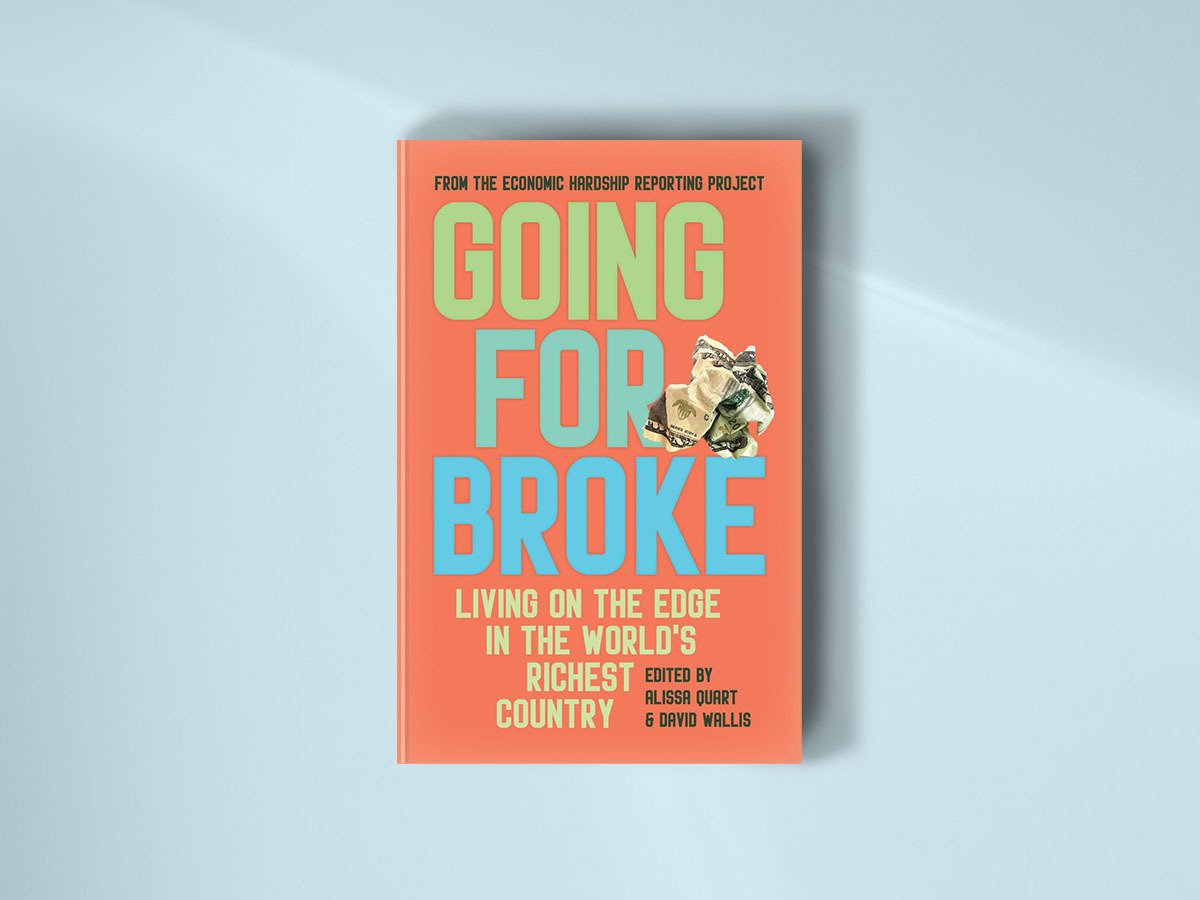
The following text is excerpted from Going for Broke: Living on the Edge in the World’s Richest Country, edited by Alissa Quart and David Wallis, published in collaboration with the Economic Hardship Reporting Project by Haymarket Books, copyright © 2023. Reprinted with permission.
When I was young everyone was “middle class.” The United States, we were told until the aughts, was a big undifferentiated mass. Some poor people at the bottom, sure, and a few rich people at the top, but the myth was that most people lived in between. It was an idea so fanciful that, as the comedian George Carlin said of the American dream, you had to be asleep to believe it.
Class is not only about how much money you have in the bank.
The 2008 financial crisis woke the country up to the fact that the economy’s rewards were not, in fact, distributed on a curve. Or, more accurately, it alerted elites to this fact (no doubt lots of people knew full well they were poor). Overnight, inequality became a matter of urgent national concern. As millions of people faced foreclosure and lost their jobs, it was clear the middle—or what was left of it—was shrinking and being squeezed. Occupy Wall Street, through its rhetoric of the 99 percent and the 1 percent, popularized a class framework that shifted the terms of the political debate, even if the terms the movement offered were still a bit fuzzy. The 99 percent, after all, includes a whole lot of people, uniting them only by the fact [that] they are not the megarich.
The notion of class, though more commonly discussed in earlier eras, has long been awash in confusion. Class and its assorted categories can be tools of clarification or of obfuscation, depending on who is using them and why. Class is not only about how much money you have in the bank. It relates to the role you play in society, specifically where you fit into the economy’s systems of finance and production.
Sign up for our free newsletters
Subscribe to NPQ's newsletters to have our top stories delivered directly to your inbox.
By signing up, you agree to our privacy policy and terms of use, and to receive messages from NPQ and our partners.
…
Abolishing class requires building the power to challenge and transform capitalism.[T]he solution to capitalism’s incessant shaming and stigmatization of poor people is not to be nicer to them or create conditions of inclusion (even if being nice and inclusive are better than the alternatives). This is how class differs from other forms of identity, like race, gender, sexuality, or disability, even as class intersects with these categories in important ways. As Stuart Hall rightly observed, “Race is the modality in which class is lived.”
The difference, however, is that unlike racism or sexism, the problem of class is not a problem of classism—of discrimination against or exclusion of people based on their wealth or income. Rather, the problem is class exploitation and the fact that these divisions exist at all. Thus, the solution is not to change society’s attitudes about the poor, but instead to create a society in which poor people no longer exist because everyone is adequately and equally provided for.
Abolishing class requires building the power to challenge and transform capitalism, a process that requires class consciousness—an awareness among masses of people of the fact of class exploitation and a desire to challenge it. This revolutionary awareness is precisely what the myth of the middle class helped suppress. But even as that myth has lost some of its power, new mystifications have emerged to take its place. In the hands of the rich, racist reactionaries who increasingly position themselves as opponents of a shadowy liberal “elite,” class becomes kitsch. When invoked by the right, the phrase “working class”—always imagined as white, male, and cisgender—becomes yet another tool of ruling-class domination.
[What we need] are stories that can build class solidarity, rather than lulling us into passivity…[and] awaken us to the possibility of our collective power.












